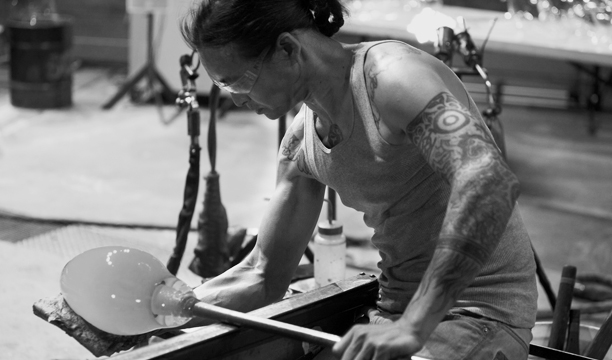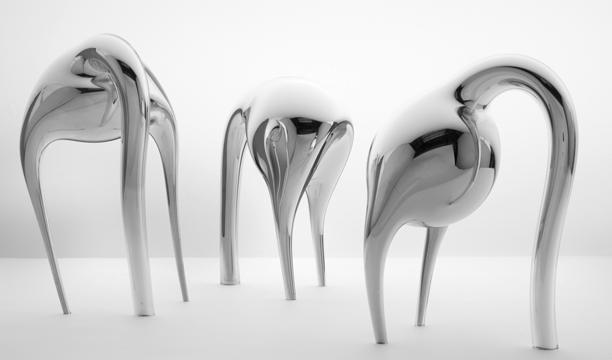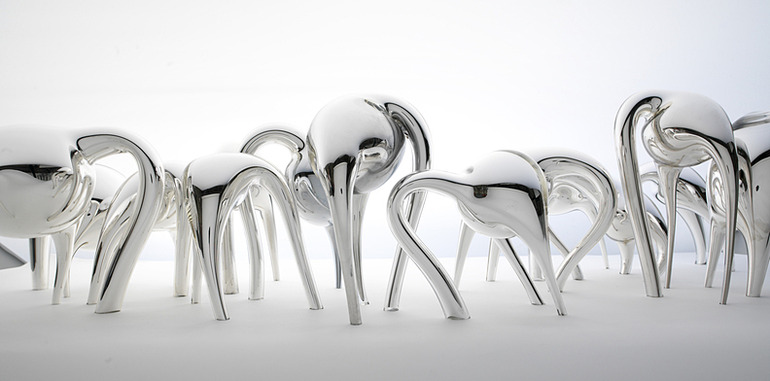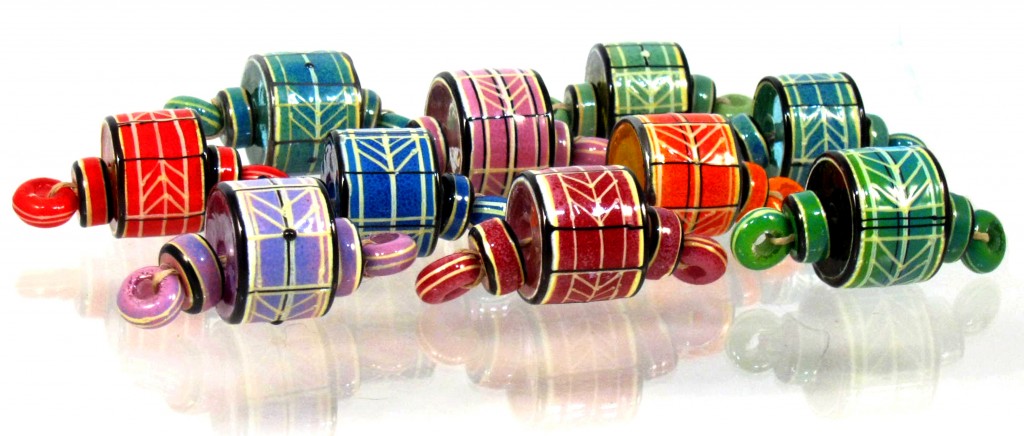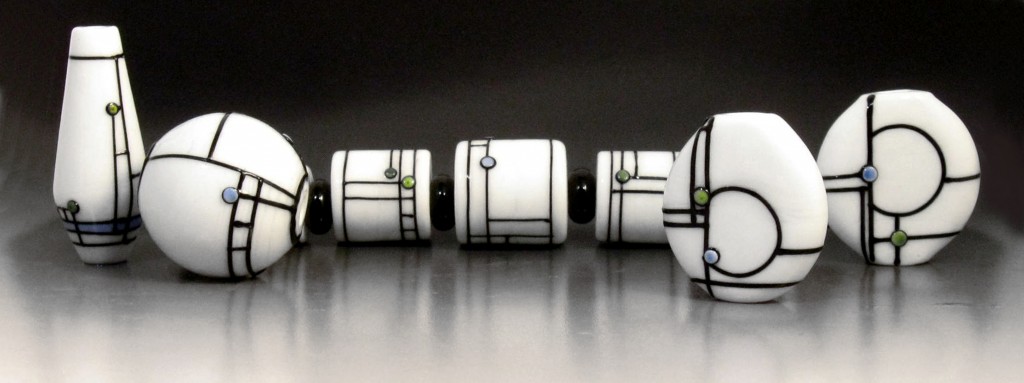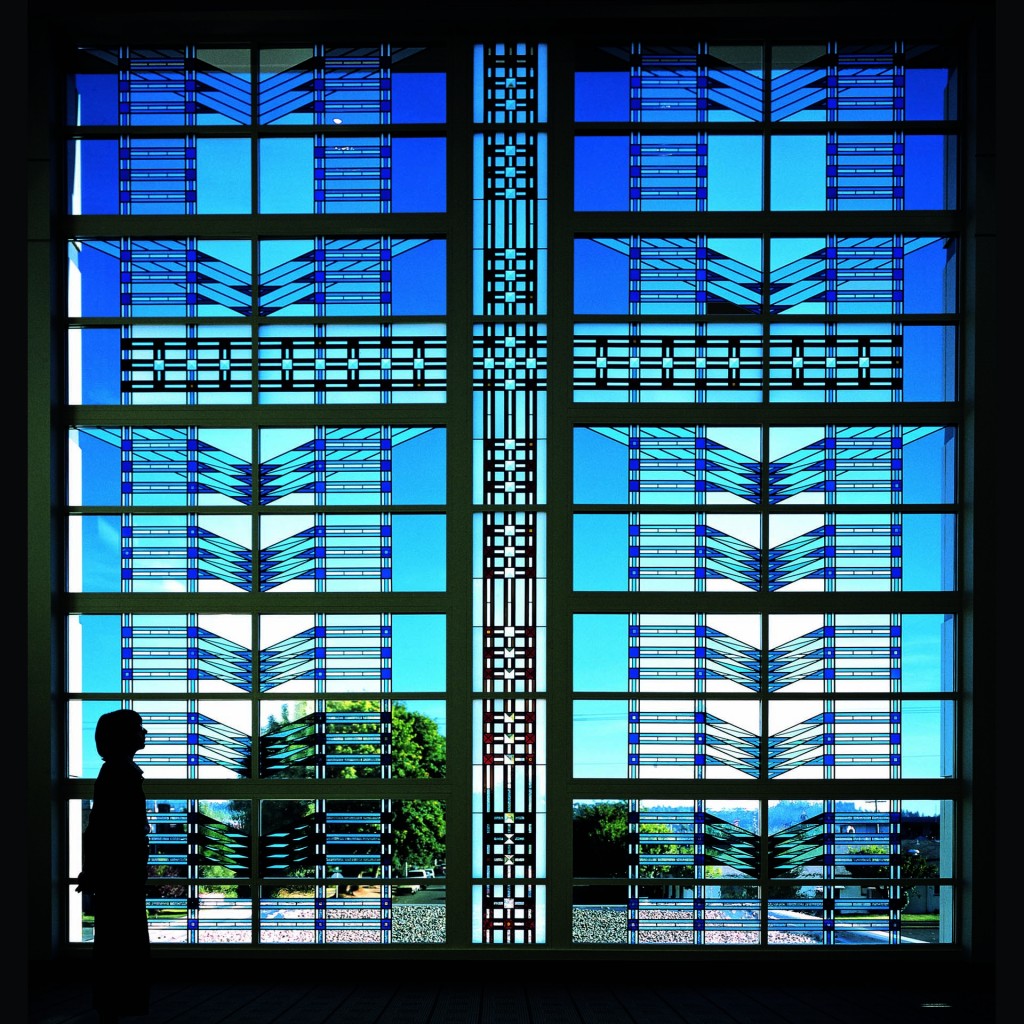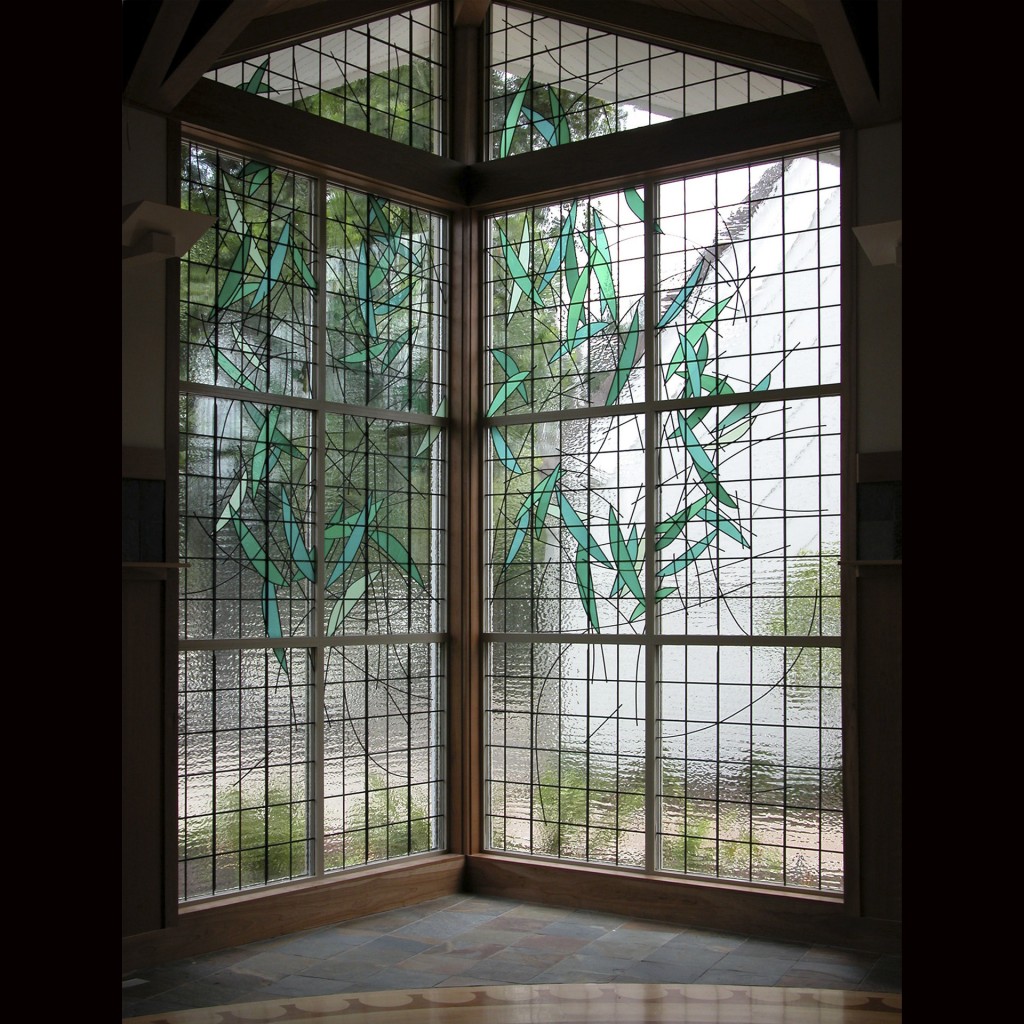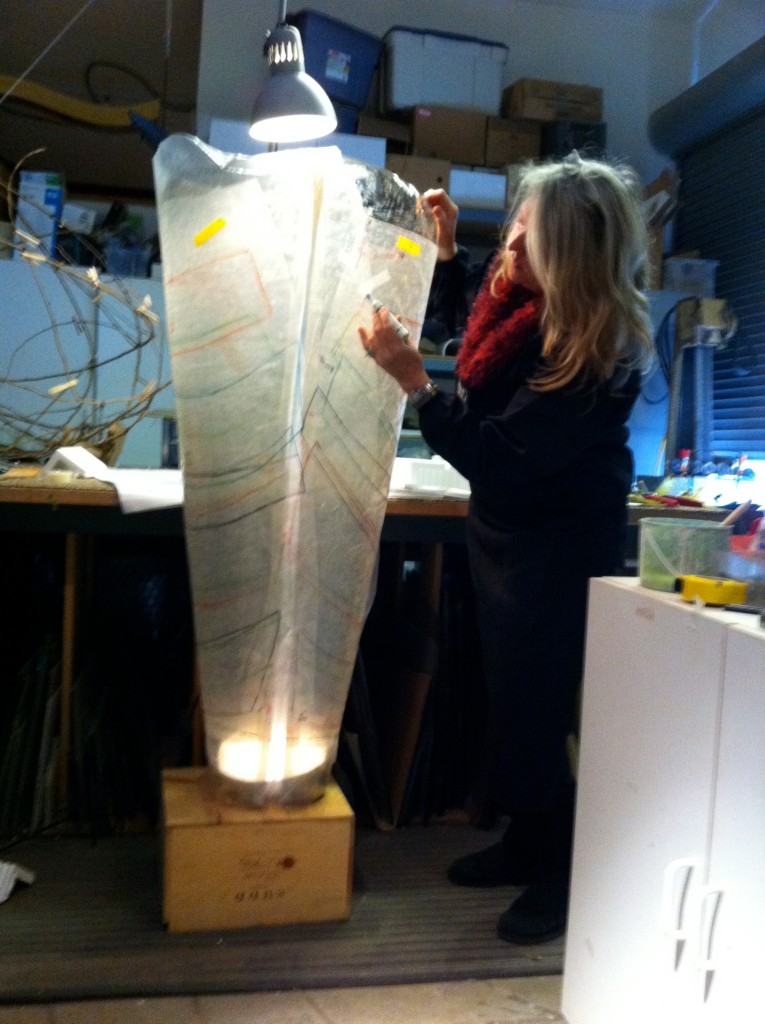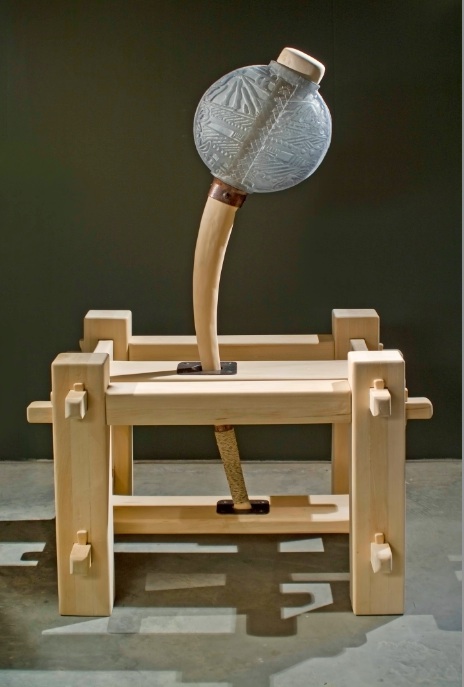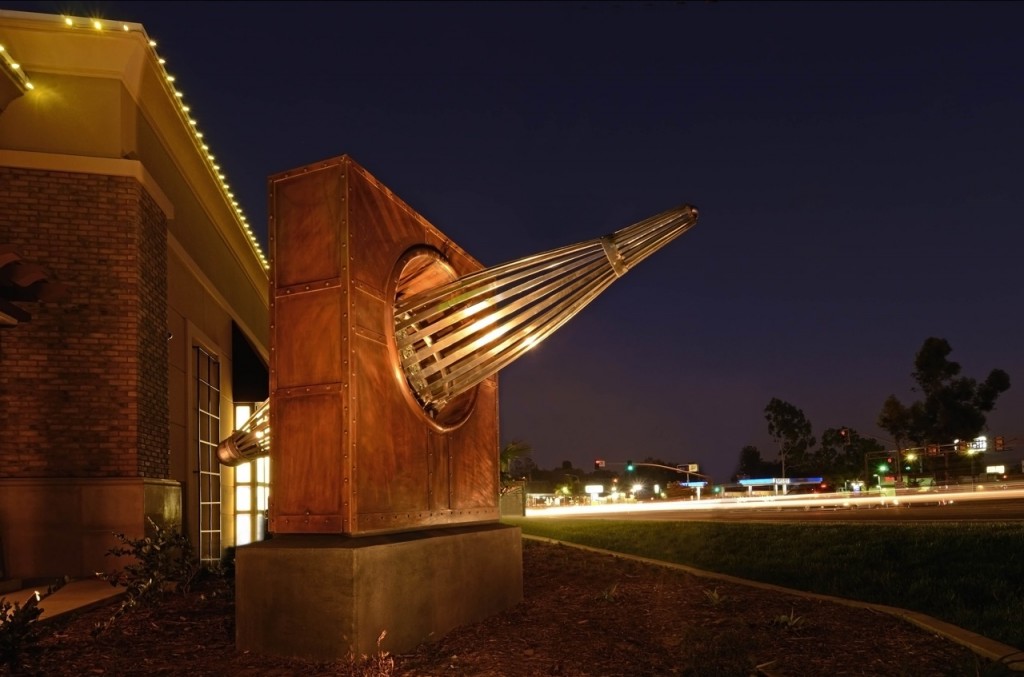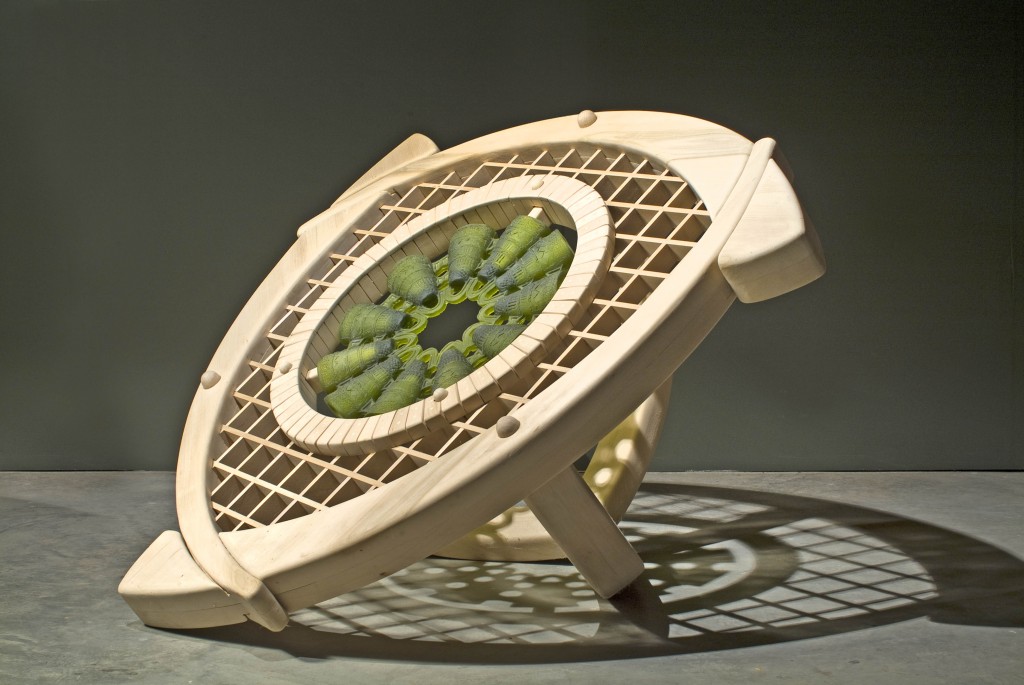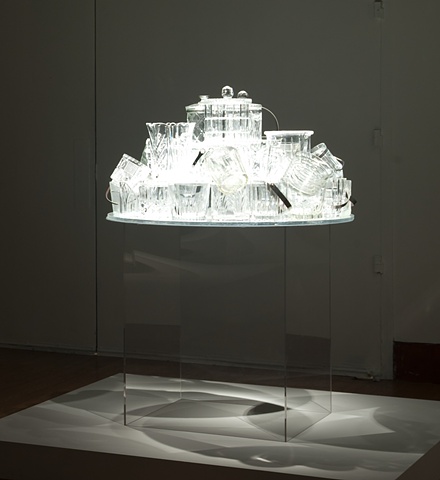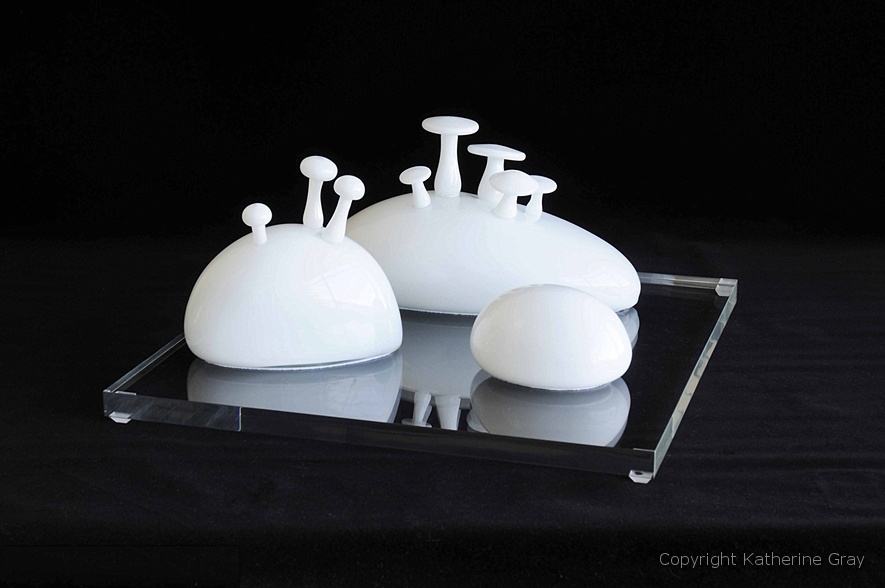“I was made in Hong Kong, born in Taiwan, and my parents are from China. I received my BFA from the Rhode Island School of Design in 1999 for Glass Sculpture after a short stint at Hampshire College studying Latin American Literature and the behavior patterns between wolves and sheep dogs. I left the East Coast heading west after college, in part to heal from an accident that left a few titanium pins and stainless steel plates in my head. I couldn’t smell or taste for three years. I moved from New Mexico to Southern California, then finally Oakland. Glass making has been my passport to seeing the world. I’ve traveled through Japan, China, Taiwan, and most recently Scandinavia. I’ve worked on various projects including custom lighting.”
Jerry Kung and Alexander Abajian are the founders of FirePrint Studio in Oakland, CA, where they collaborate to create glass sculpture utilizing age-old techniques while integrating a contemporary aesthetic. They were awarded People’s Choice honors at the 2011 Museum of Glass Red Hot Party & Auction.
For the past four or so years, Alex Abajian and Jerry Lin-Hsien Kung have been making “creatures” — tripodal formations of bended glass, typically coated in a mirror finish. In isolation, one of these creatures might appear a merely decorative object — a chic, sensuous addition to a posh lobby or some such space. However, Abajian and Kung have no interest in delivering their creations to such a fate.
To thwart such a banal reading, the duo crowds the creatures in a runway installation, wherein they become a reflective, mercurial melee of limbs and curves, capturing viewers’ reflections and enlivening one another. “They naturally want to go together in certain ways,” said Abajian. “Like one will be pushing and the other will be pulling. They nestle into these groups and you see it looks like a group of people, how people actually congregate.”
With a $40,000 grant from the Tacoma Museum of Glass, Abajian and Kung were able to create quite a sizable congregation. This also makes the exhibition, Creatures, now at Vessel Gallery, one of the most expensive in the history of Oakland’s gallery scene.
But it’s not exactly clear how someone seeking art should approach these objects. One thing is sure: They are not like conventional sculptures, where the art is in some sense encapsulated in the finished form. Rather, Abajian and Kung’s art is in the process.
The artists have been collaborating since they were students at the Rhode Island School of Design. They have a seemingly inexhaustible supply of shared stories, and even possess matching cranial scars (each the result of a serious injury; neither glass blowing-related). Together, they pursued the craft end of glass-making for a while, but soon started drifting toward something else — a more playful, organic process free of rigid expectations.

